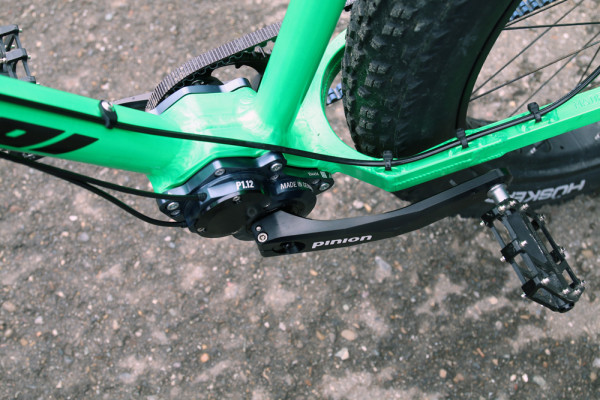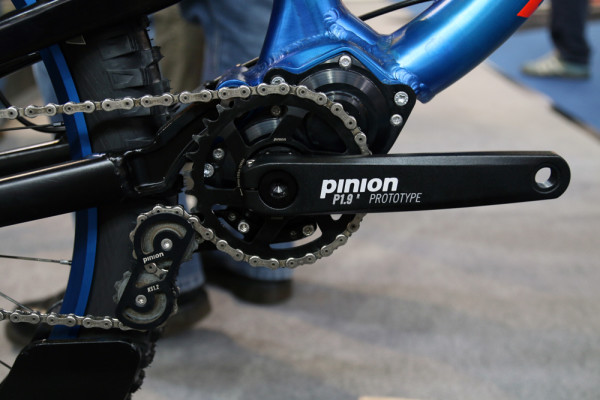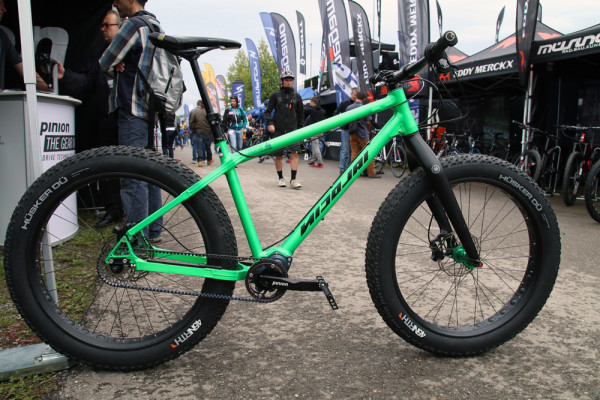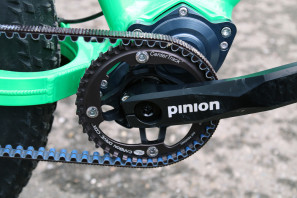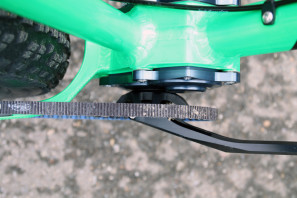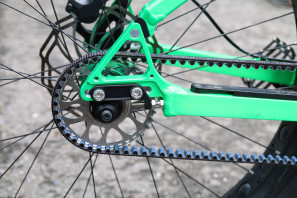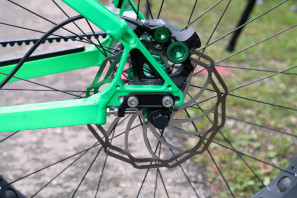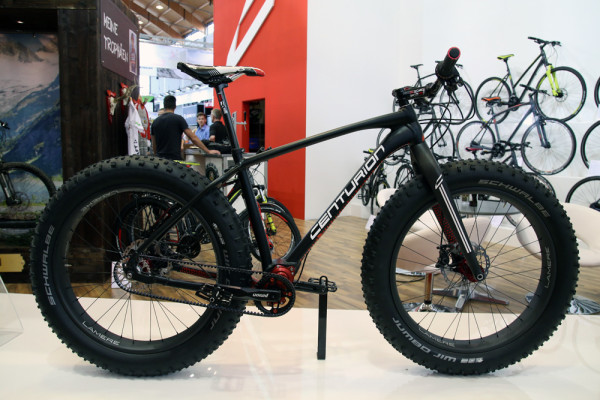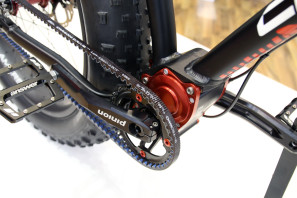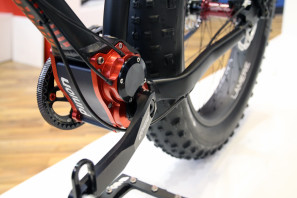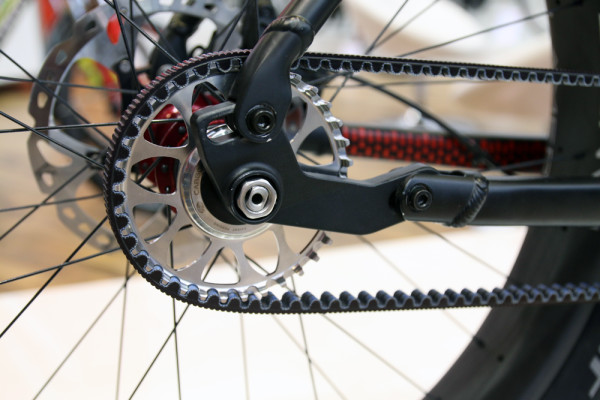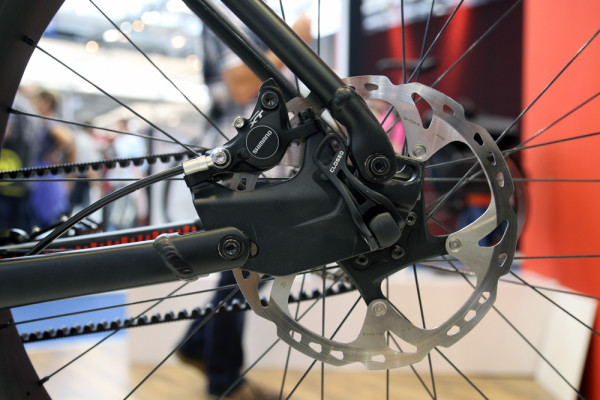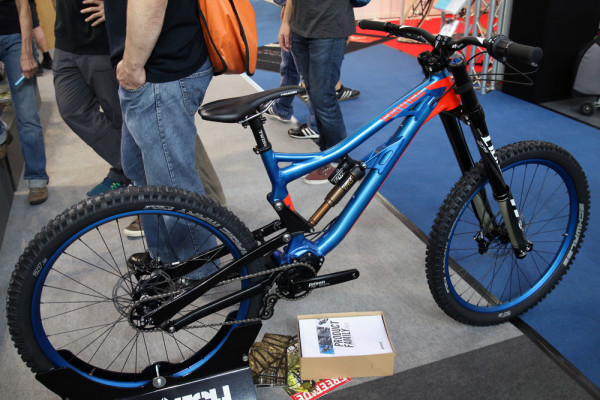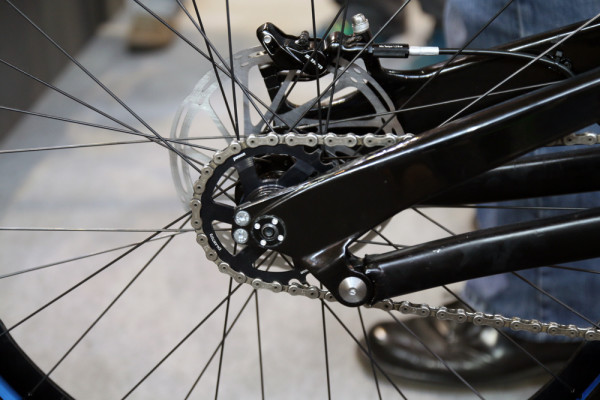Originally making their mark with a single 18 speed internal gearbox, Pinion has drastically expanded their line up with 3 new gearing options. While most of the bicycle drivetrains are seeking more and more gears, the new Pinion boxes make do with fewer gears in order to make the drivetrains as light as possible but still offer excellent range.
In addition to the P1.18, Pinion now offers the P1.12, the P1.9XR and the P1.9CR each with its own unique application. Initially fairly limited in the amount of bikes that were equipped with Pinion gearboxes, Pinion states that there are now 50 different brands with bikes to take advantage of the sealed drivetrain design. Thanks to the new gearing options there are a number of bike styles taking advantage of the gearboxes, but one category seems perfectly suited to a box with a belt – fat bikes.
More details on the new gearboxes plus a few of the different applications next…
Visually, none of the new gearboxes look any different from the original P1.18 with the exception of the width of the case where the cables attach. To allow for the extra gearing, the 18 speed box has an additional 2 gears inside which results in the extra width. Otherwise the mounts and the casing remains the same. Inside the gearboxes the P1.18 is a 6×3 transmission while the P1.12 is 4×3 and the P1.9 XR and CR are both 3×3. Fewer gears means less weight with the original P1.18 at 2700g, the P1.12 at 2350g, and the two 9 speed boxes coming in at 2200g.
As far as their intended purpose, the original 18 speed gear box will now be marketed towards world travel due to its extended 636% range. The latest version sees updated shifting that results in noticeably smoother shifting into the 7th and 13th cogs which results in 18 speeds with wider range than most 3×10 drivetrains. The new P1.12 is geared towards standard mountain biking and touring and offers a slightly smaller 600% range and 12 gears. Comparatively a 2×10 drivetrain has about a 535% range and an 11 speed IGH about 409%. The P1.9XR is a 9 speed gear box with an extended range which will find a home on enduro mountain bikes and e-bikes. The XR allows shifts of up to 5 gears at a time and offers a broader 568% range with larger gear steps to work well with aggressive mountain biking and e-bikes apparently. Finally, the P1.9CR is the Compact Ratio version of the 9 speed gearbox which is designed for urban bikes with a tight 364% range.
Due to the conditions fat bike typically encounter, it seems like they are the perfect candidate for a belt drive gear box which is probably why there were a few floating around the show. Nicolai has been showing a Pinion fat bike for awhile, but we had a chance to check out this P1.12 equipped version and take it for a quick spin. Shifting was quite smooth though a few gears you need to let off the pedals before it can shift into the next gear. Pinion manufactures a special fat bike spider for the drivetrain that offsets the chainring in order to clear the larger tires. Since the spider is standard 104 BCD standard chainrings or belt drive rings can be used.
The Nicolai uses sliding dropouts and a split seatstay/dropout junction to allow for the belt.
Centurion had a fat bike prototype on displaythat was built up to 31.46 lbs (14.27kg)! The weight is even more impressive when you consider the bike is running 4.8 Schwable Jumbo Jim tires and the heaviest P1.18 Pinion gearbox.
The frame uses an interesting rocking dropout design that not only tensions the belt and keeps the disc caliper centered, but allows for a belt drive to be used.
Alutech was showing off the potential of the P1.9XR drivetrain with a prototype Sennes DH bike. To accommodate for chaingrowth on suspension bikes the gearboxes use a chain tensioner just behind the crankset.
